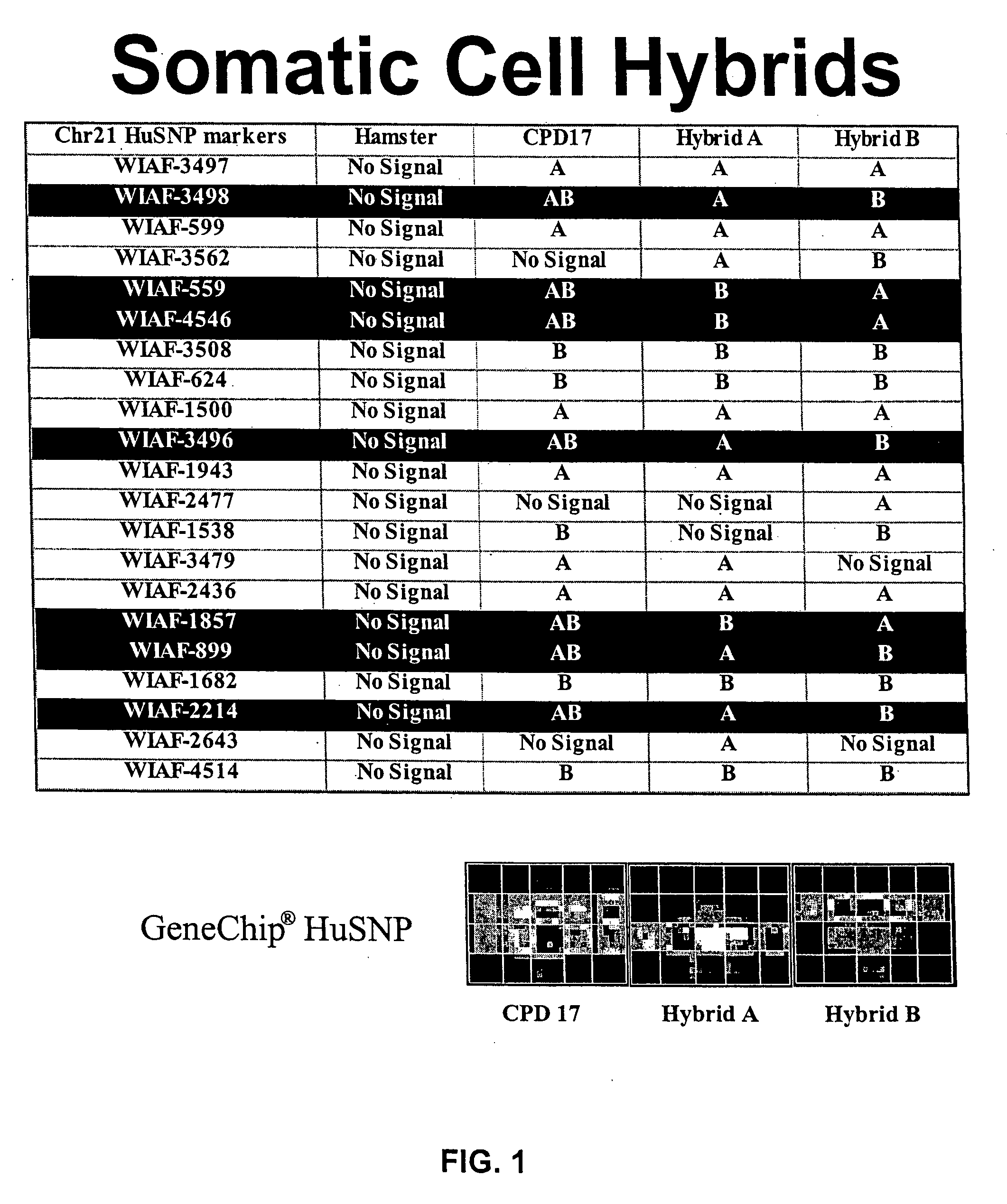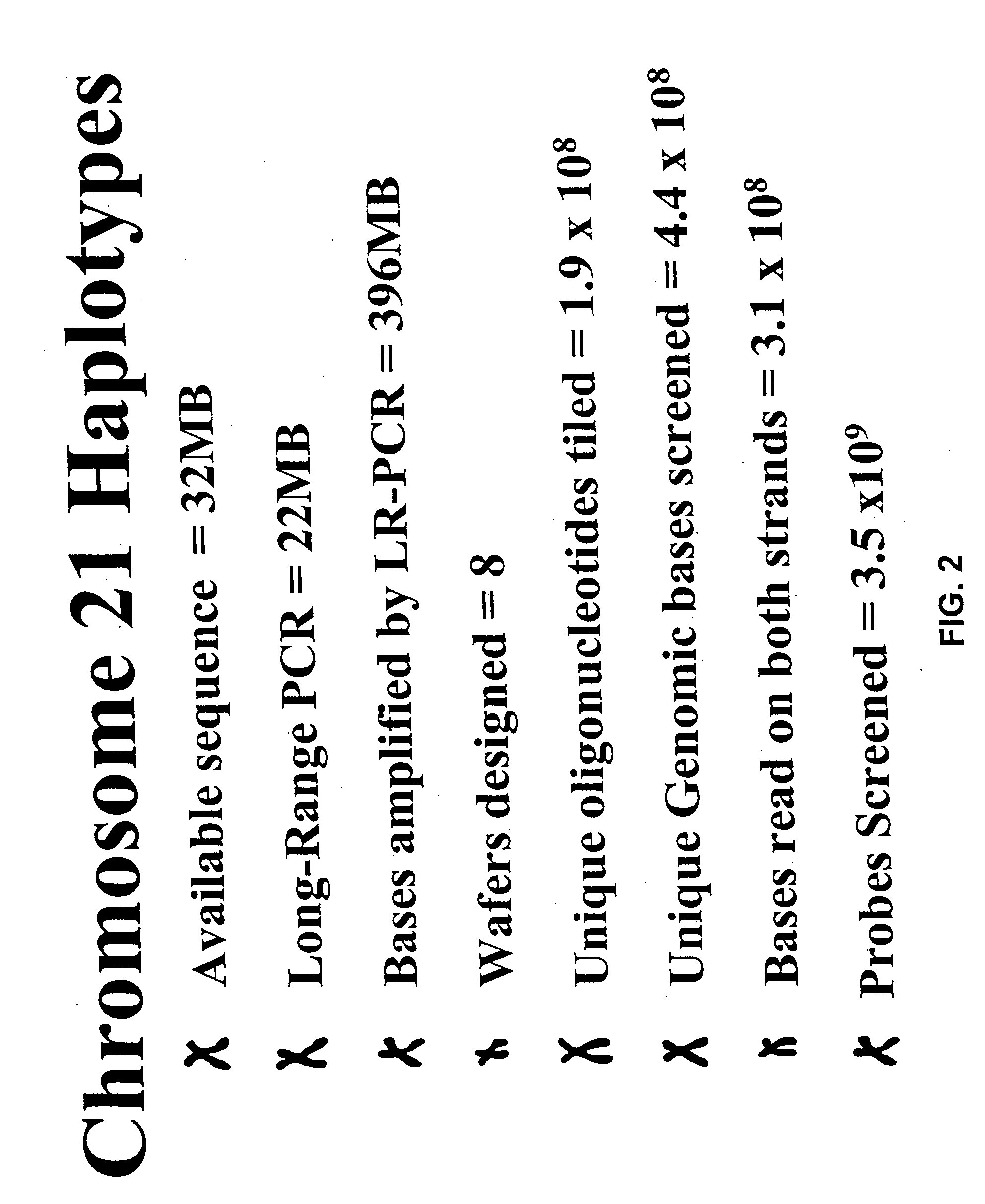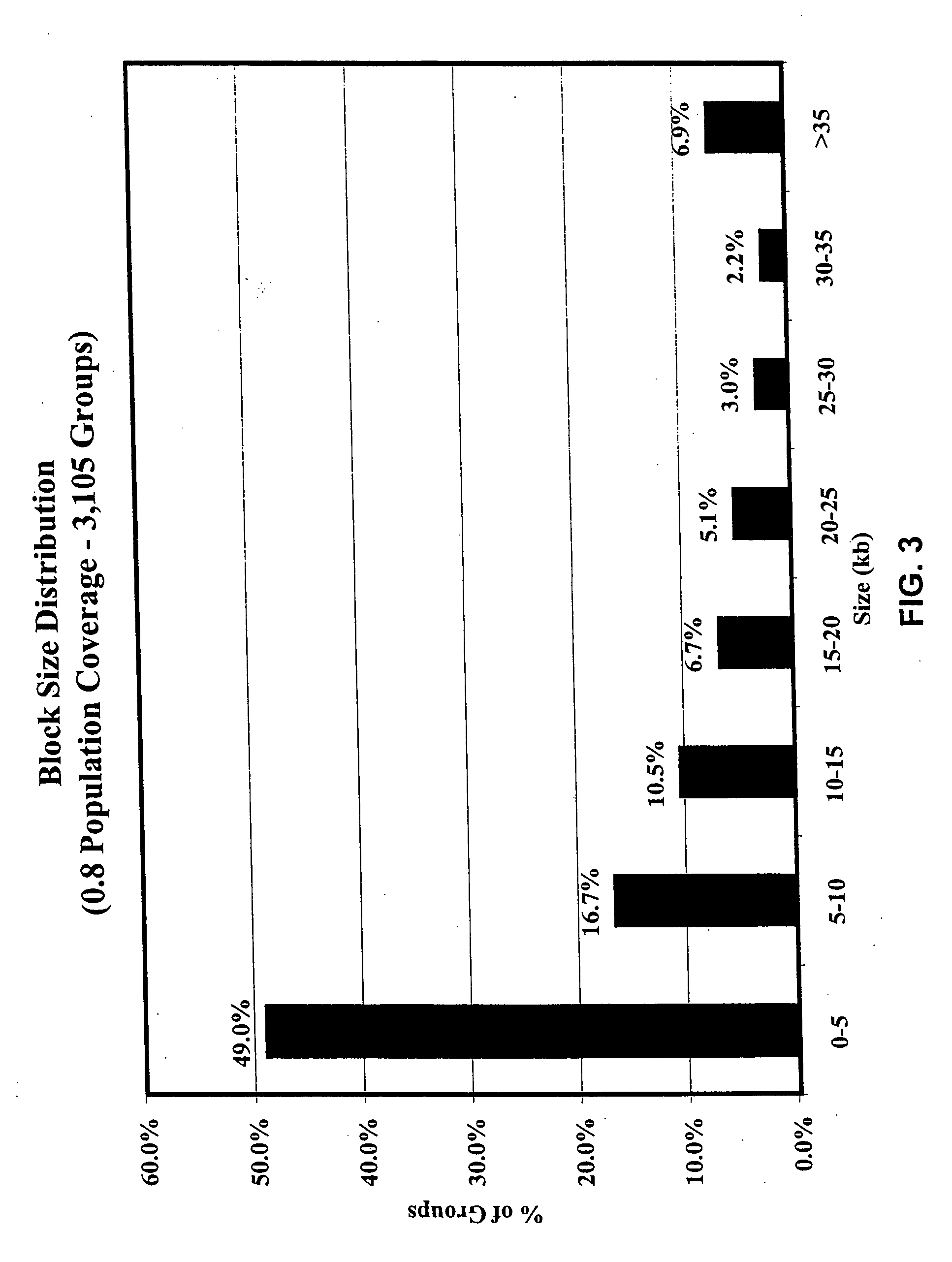Human genomic polymorphisms
a technology of human genomics and polymorphisms, applied in the field of human genomic polymorphisms, can solve the problems of defective protein expression, paucity of polymorphisms identified, and lethal disadvantage of variant forms
- Summary
- Abstract
- Description
- Claims
- Application Information
AI Technical Summary
Problems solved by technology
Method used
Image
Examples
example 1
Preparations of Somatic Cell Hybrids
[0078] Standard procedures in somatic cell genetics were used to separate human DNA strands (chromosomes) from a diploid state to a haploid state. For example, diploid human lymphoblast cell lines were fused to a diploid hamster fibroblast cell line containing a mutation in the thymidine kinase gene. In a sub-population of the resulting fused cells, human chromosomes were introduced into the hamster calls. Selection for the human DNA-containing hamster cells (fusion cells) was achieved by utilizing HAT medium. Only hamster cells that had a stably incorporated human DNA strand grow in cell culture medium containing HAT.
[0079] Hamster cell line A23 cells were pipetted into a centrifuge tube containing 10 ml DMEM in which 10% FBCS+1× Pen / Strep+10% glutamine were added, centrifuged at 1500 rpm for 5 minutes, resuspended in 5 ml of RPMI and pipetted into a tissue culture flask containing 15 ml RPMI medium. The lymphoblast cells were grown at 37° C. t...
example 2
Selecting Haploid Hybrids
[0084] Scoring for the presence, absence and diploid / haploid state of each hybrid was performed using the Affymetrix, Inc. HuSNP GENECHIP® (Affymetrix, Inc. of Santa Clara, Calif., GENECHIP® HuSNP Mapping Assay, reagent kit and user manual, Affymetrix Part No. 900194), which can score 1494 markers in a single chip hybridization. As a control, the human diploid lymphoblast cell line was screened using the HuSNP chip hybridization assay, and any SNPs which were heterozygous in the parent lymphoblast diploid cell line were scored for haploidy in each fusion cell line. By comparing the markers that were present as “AB” heterozygous in the parent diploid cell line to the same markers present as “A” or “B” (hemizygous) in the hybrids, the human DNA strands which were in the haploid state in each hybrid line was determined. FIG. 1 has a table with a portion of results obtained by screening hamster-human cell hybrids with the HuSNP GENECHIP®. One column of the tabl...
example 3
Long Range PCR
[0085] DNA from the hamster-human cell hybrids was used to perform long-range PCR assays. The products of this PCR were used to determine the sequence of specific DNA strand regions from chromosome 21 of the 50 haploid human genomes, and SNPs were discovered and scored by comparing the individual sequences. Long range PCR assays are known generally in the art and have been described, for example, in the standard long range PCR protocol from the Boehringer Mannheim Expand™ Long Range PCR Kit and in U.S. Pat. No. 5,512,462 to Cheng.
[0086] Primers used for the amplification reaction were designed in the following way: a given sequence, for example the 23 megabase contig on chromosome 21, was entered into a software program known in the art herein called “repeat masker” which recognizes sequences that are repeated in the genome (i.e., Alu and Line elements). The repeated sequences were “masked” by the program by substituting each specific nucleotide of the sequence (A, T...
PUM
 Login to View More
Login to View More Abstract
Description
Claims
Application Information
 Login to View More
Login to View More - R&D
- Intellectual Property
- Life Sciences
- Materials
- Tech Scout
- Unparalleled Data Quality
- Higher Quality Content
- 60% Fewer Hallucinations
Browse by: Latest US Patents, China's latest patents, Technical Efficacy Thesaurus, Application Domain, Technology Topic, Popular Technical Reports.
© 2025 PatSnap. All rights reserved.Legal|Privacy policy|Modern Slavery Act Transparency Statement|Sitemap|About US| Contact US: help@patsnap.com



